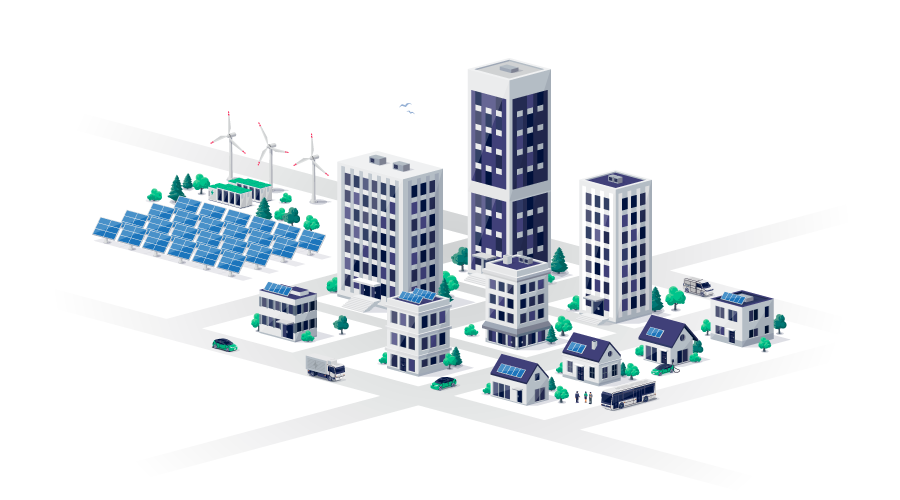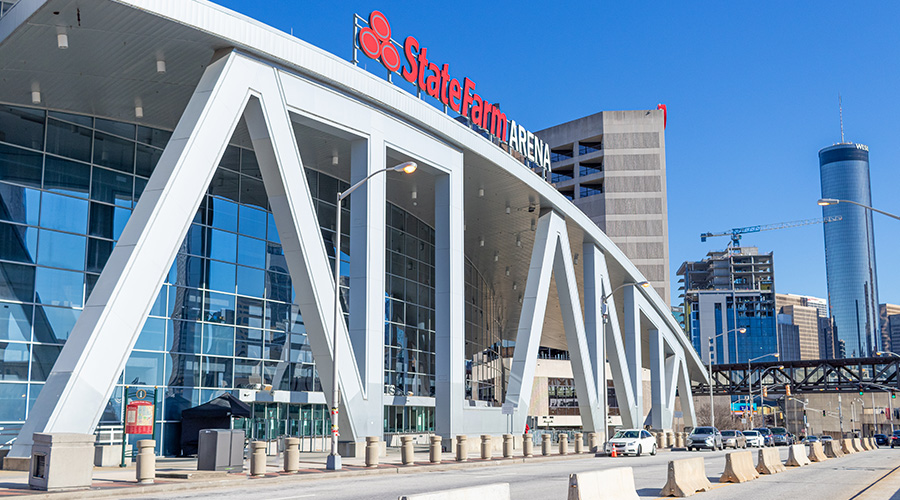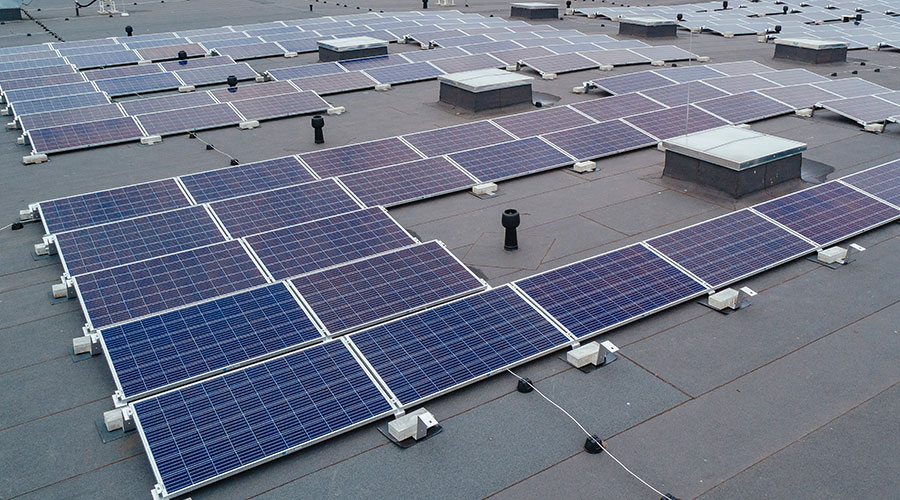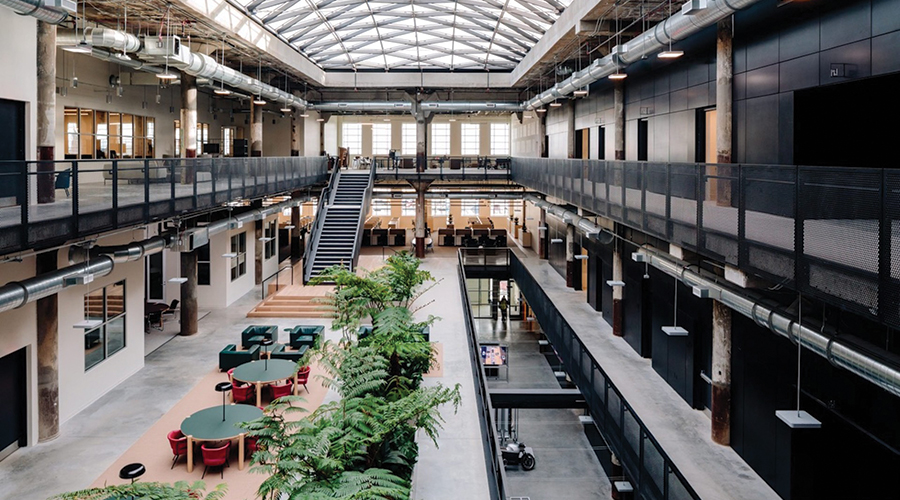What Is the Role of Renewables in Building Electrification and Efficiency?
As facility managers endeavor to reduce carbon emissions as part of their organizations’ climate plan, renewables are an absolute must.
By Greg Zimmerman, senior contributing editor
As energy efficiency and deep energy retrofits with the goal of net-zero energy buildings become more common for facility managers, a “which comes first, the chicken or egg” discussion has also emerged: Does a facility manager focus first on efficiency and then renewables to make up the difference? Or the other way around?
Most experts suggest this is a no-brainer: Make the facility as efficient as possible, and then cover the rest in onsite renewables. If the facility isn’t efficient, even if one is still using renewables, wasted energy is wasted energy. So be as efficient as possible, use as little energy as possible, and produce the difference between the energy spend and zero with renewables.
As more and more buildings are working toward electrification, this conversation about the role of renewables in an efficient building becomes even more relevant. The foundation for the goal of building electrification is that buildings will be using renewable energy, and therefore greatly reducing or eliminating fossil fuels (like natural gas) from buildings altogether. The two strategies must be complementary to ensure that both are effective.
We recently talked with renewables and building electrification expert Ella Mure. Mure is an associate with RMI's Carbon-Free Buildings Program and splits her time between two program initiatives. She supports the facilitation and streamlining of deep energy retrofits in Massachusetts for the REALIZE-MA Initiative and conducts research on climate risk within the real estate market for the Finance the Future Initiative.
FacilitiesNet: As facility managers focus on electrification in buildings, why should they also consider how renewables as a piece of this strategy?
Mure: Renewables should be a top consideration for facility managers pursuing electrification because it is the surest and fastest way of reaching zero operating emissions. Even if buildings are fully electrified, operations can still be carbon-intensive if fossil fuels generate the supplied electricity. As we wait for the grid to become greener across communities and industries, increasing the utility and availability of onsite renewables will optimally position buildings for long-term sustainability and get us closer to zero-carbon energy.
Renewables also contribute to the facilities’ resilience. Installing a renewable array with battery storage provides a valuable backup system in the event of a power outage, especially in larger buildings where essentials such as fresh air intake or elevators require electricity.
It is important to consider that some renewables, namely solar photovoltaics (PV), generate direct current (DC) electricity. The electric grid and some mechanical equipment require converting DC electricity to alternate current (AC) electricity, which can cause considerable energy loss. Some equipment can be specified and work directly with the DC electricity to avoid these losses. Optimizing onsite solar and making the investment feasible requires close coordination of electricity generation and consumption.
FacilitiesNet: Why are renewables also such a crucial part of any deep energy retrofit initiative?
Mure: Renewables are crucial because they get buildings closer to zero carbon aligned, which will be necessary to reach global and U.S. climate goals. The inverse of this question might yield more insight into the momentum we need to retrofit a largely inefficient and aging building stock. Why are deep energy retrofits crucial to generating clean energy for our buildings? Poorly performing buildings, even with renewables, will require significant energy load supply from existing grid infrastructure. Renewable energy and high-performing buildings that are energy efficient go hand-in-hand by minimizing energy loads and making clean energy go even further. Whether or not a building is compatible with onsite solar or other renewables, every facility manager can play their part by reducing their energy load and improving overall efficiency.
FacilitiesNet: We recently did a piece on ways to get renewable energy with no upfront investment — PACE, community solar, energy service contract. Are there other ways you’d add to these that facility managers can finance renewables?
Mure: The Inflation Reduction Act (IRA) includes substantial incentives for solar investments. Commercial entities will receive a 30 percent tax credit on the solar investment costs. There are also options for direct pay for nonprofits and entities without tax liability. Local solar grants are also available depending on the state or municipality the building falls under. Factoring in the payback period and long-term savings is also crucial. Out of all renewable energy options, solar is penciling out the fastest, allowing building owners or facility managers to reap the benefits of utility savings quickly.
As financial market interest rates rise, consumers should pay attention to different financing mechanisms for renewables to avoid exposure to current high-interest rates.
FacilitiesNet: Speaking of finances, what is the “state of the art” in terms of talking about how renewables can pay back? How can facility managers make the return-on-investment argument regarding onsite renewables, especially solar?
Mure: Direct lifecycle costing highlights the significant return on investment for renewables. These options drastically cut down operating costs in the long run, and the payback towards the upfront costs is happening quickly. As utility prices continue to vary and increase over time, onsite renewables are the best way to control costs and reduce the risk of unpredictable and variable utility rates.
Solar investment tax credits can provide significant federal tax credits for building owners, plus whatever local and state credits are available. Solar loans or leases are another financing opportunity property owners can explore. This involves a lease or loan provided by a bank (the lender can partner with an energy service company) for solar systems, including battery storage, where the lessor owns the solar equipment, and the customer leases the solar system. In this case, the equipment ownership reverts to the building owner at the lease payoff. Power purchasing agreements (PPA) are another financing mechanism where a developer designs, permits, and installs an energy system on a customer’s property at little to no cost and then sells the power generated to the customer at a fixed per kWh below retail rate.
Greg Zimmerman is senior contributor editor for the facility group, which includes FacilitiesNet.com and Building Operating Management magazine. He has more than 19 years’ experience writing about facility issues.
Related Topics:












